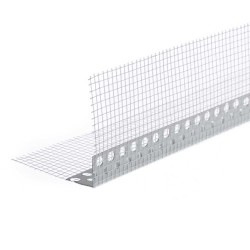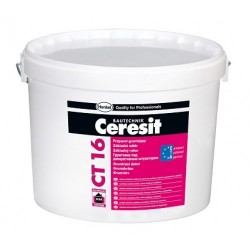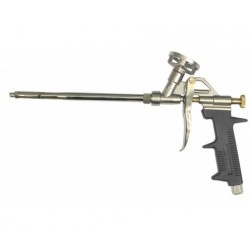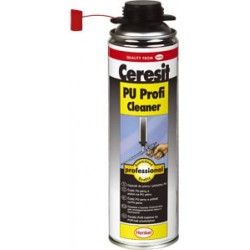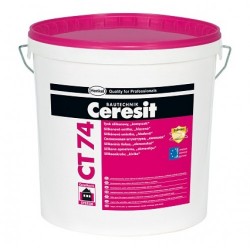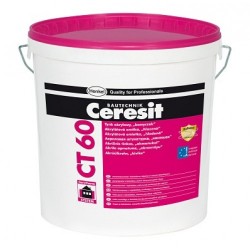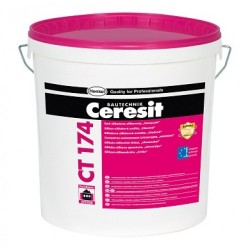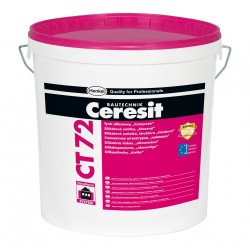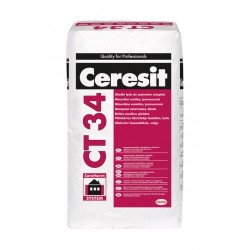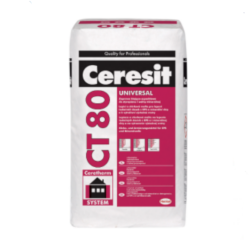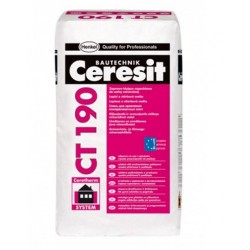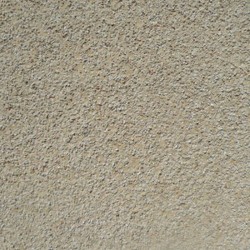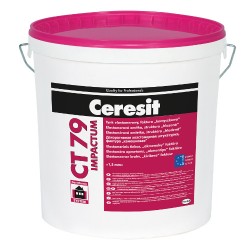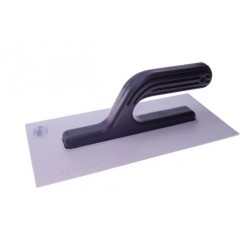Render, Adhesive, Reinforcing Mesh
Adhesives
Adhesives are used for fixing External Wall Insulation boards -- polystyrene boards, phenolic and mineral wool boards and also for embedding reinforcing protection mesh. Most adhesives are additionally reinforced with fibres, which make it more resistant to the formation of cracks and hairlines. Adhesives are flexible, light and has homogeneous consistency. They are easy to apply and spread, thus increasing the efficiency of the thin layer.
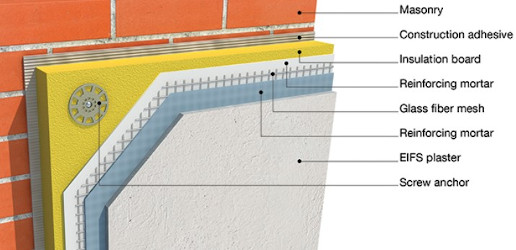
Fixing external wall insulation boards
- The adhesive mortar should be applied with a trowel along the board edges forming a strip and a few blobs in the middle.
- The board is then pressed to the wall with a few slight blows of a long float.
- The properly applied adhesive mortar when pressed should cover minimum 40% of its surface.
Fixing reinforcing mesh
- The adhesive mortar should be spread along the surface of the insulation boards by means of a smooth long steel float.
- The glass fibre mesh should be placed on the mortar and pressed in.
- Then a second layer of adhesive should be applied over the glass fibre mesh, until it is not visible.
- Fresh adhesive stains should be cleaned with water and hardened elements should be mechanically removed.
Renders
- Acrylic render
- Mineral render
- Mosaic render
- Silicone render
Acrylic render
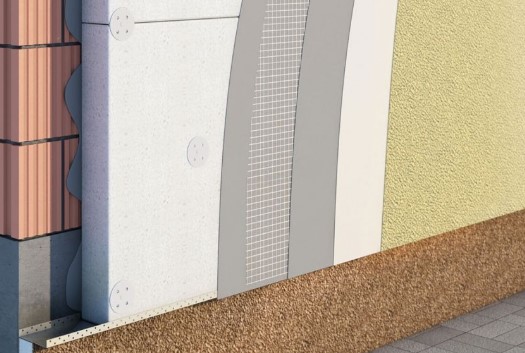
Acrylic render is a fast drying finishing coat containing acrylic aggregates to display an attractive finish. Acrylic is much more resistant to cracking than other types of render. It takes only two days to cure and dry while traditional renders can take up to 28 days. Acrylic renders incorporate minute reinforcing fibres to produce an incredibly tough and durable finish, therefore can be used to cover up small hairline cracks in masonry surfaces. Acrylic renders are permeable to water vapour, allows the substrates to breathe. It is also resistant to efflorescence -- the white salts that sometimes leaks from brickwork.
Acrylic render is available in a wide range of colours and textures and can be trowelled on or rolled or even sprayed onto a surface. Two coats are generally applied. Suitable substrates: Light weight thin coat render systems, cement render and brick and stone. Acrylic render is long-lasting, aesthetically pleasing and forms a strong protective barrier.
Mineral render
Mineral Render is manufactured from natural materials such as mineral aggregates, and white marble grain and is eco-friendly, available in 2, 3 and 4mm grain sizes, and is is highly damage resistant. Mineral render contains cement that allows it to set quicker. Mineral render can be easily used during lower temperature periods. Mineral Render also is fire resistant, with Class 0 surface spread of flame rating.
Mosaic render
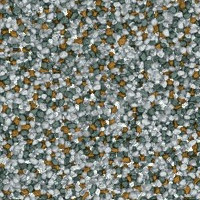
It is a highly flexible and easy apply and to clean with increased scratch resistance and covering ability. Sealing component: transparent resins. Filler: coloured quartz stone. Mosaic render can be applied and smoothed with stainless steel trowel. The finished surface is a glassy, colourful coat upon setting. Mosaic render can be used on concrete substrates, traditional plasters and on insulated external wall surfaces etc. Suitable for indoor and outdoor use on walls exposed to high wear: at plinths, entrances, hallways, window and door reveals.
Silicone render
Silicone render is cement based with specially selected polymers added to the mix, and can be on a variety of substrates. These silicone polymers make the finished coat strong. This silicone render allows water vapour to pass through it letting the substrate breathe. Silicone render is available as one coat render, eliminating the need for a base coat and come in a wide range of colours and can be finished in different textures, from a flat sponged float finish or a rougher scraped finish as well as Pebble Dash. They are usually premixed and only require the addition of clean water to produce the final product. This ensures the quality of the render remains consistent and ensures a superior finish.
Applying Render
- Rendering should be done in good weather.
- It should not be done in direct sunlight or in areas that are subjected to winds.
- The substrate surface should be roughened.
- The surface should be wetted so that the wall.
- Cement render in particular should be kept damp between coats or for three days, so the render does not crack while it is setting.
- Most renders take two or three coats, depending on the surface being rendered, and the type of render you are opting to use.
































